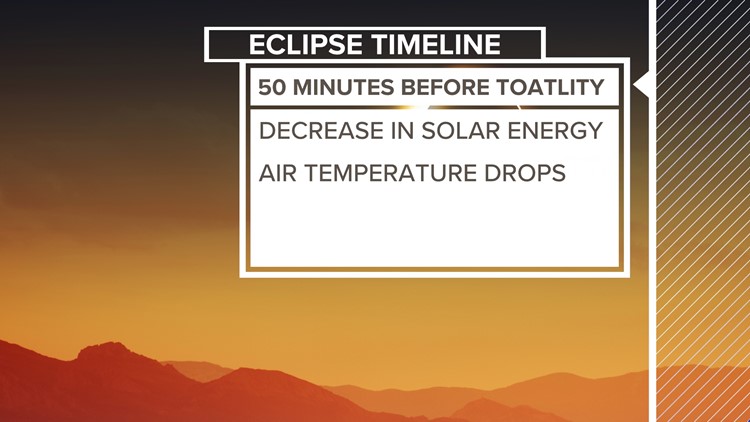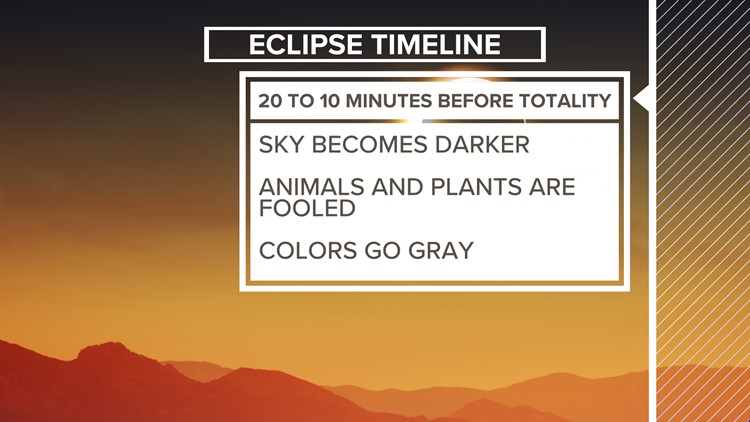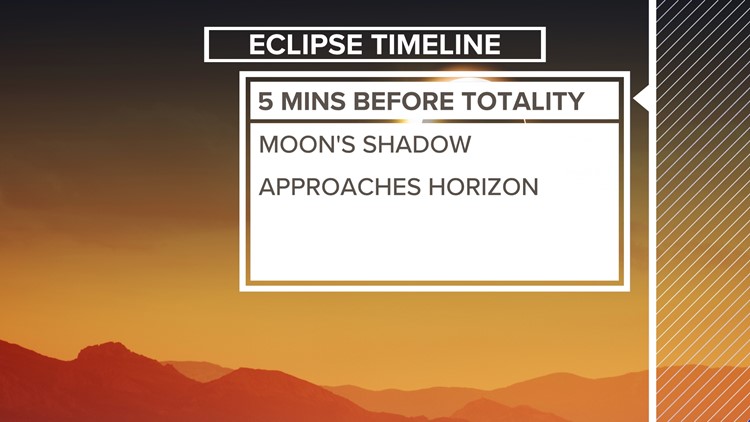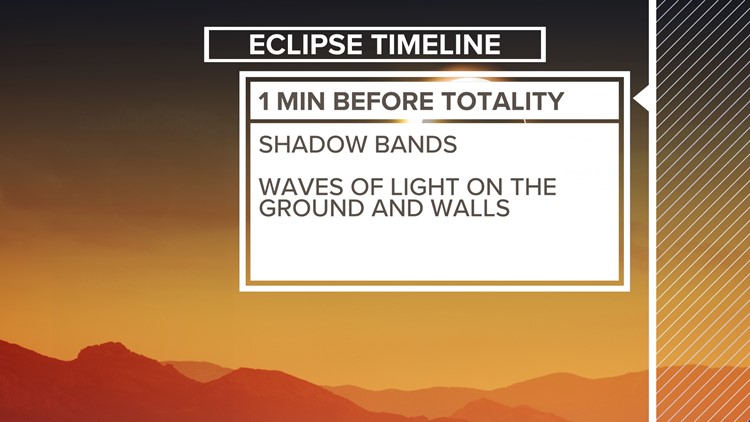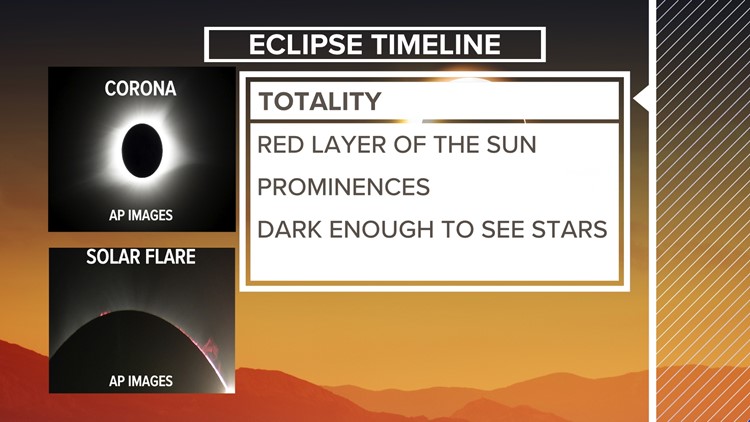LITTLE ROCK, Ark. — On April 8, 2024, viewers in many areas across Arkansas will have the opportunity to witness a once-in-a-lifetime event, a total solar eclipse.
As the sun, moon, and Earth line up perfectly the sun will get blocked by the moon and cast a dark shadow on a small sliver of our planet. During the middle of the afternoon, the skies will become darker, and strange things will happen as the sun disappears for a few minutes.
The narrow dark shadow of the moon will race across the country at over 1600 mph making the path of totality, which will travel over most of Arkansas. There is a world of difference in 95% coverage versus 100% coverage.
Totality length across Arkansas
Little Rock will see the eclipse begin at 12:33 p.m. and will reach 100% coverage or totality at 1:52 p.m. The eclipse ends at 3:11 p.m.
Totality length and times will vary slightly across the path. Some cities and towns included in the path of totality will be:
- Prescott- 1:22
- Hope - 1:40
- Arkadelphia - 2:01
- Little Rock - 2:20
- Jonesboro - 2:21
- Texarkana - 2:23
- Jacksonville - 2:28
- Benton - 2:38
- Searcy - 2:56
- Mountain Home - 3:10
- Maumelle - 3:17
- Clarksville - 3:30
- Hot Springs - 3:37
- Marshall - 3:50
- Conway - 3:53
- Batesville - 4:02
- Heber Springs - 4:02
- Mena - 4:07
- Russellville - 4:12
- Melbourne - 4:12
- Clinton - 4:15
- De Queen - 4:17

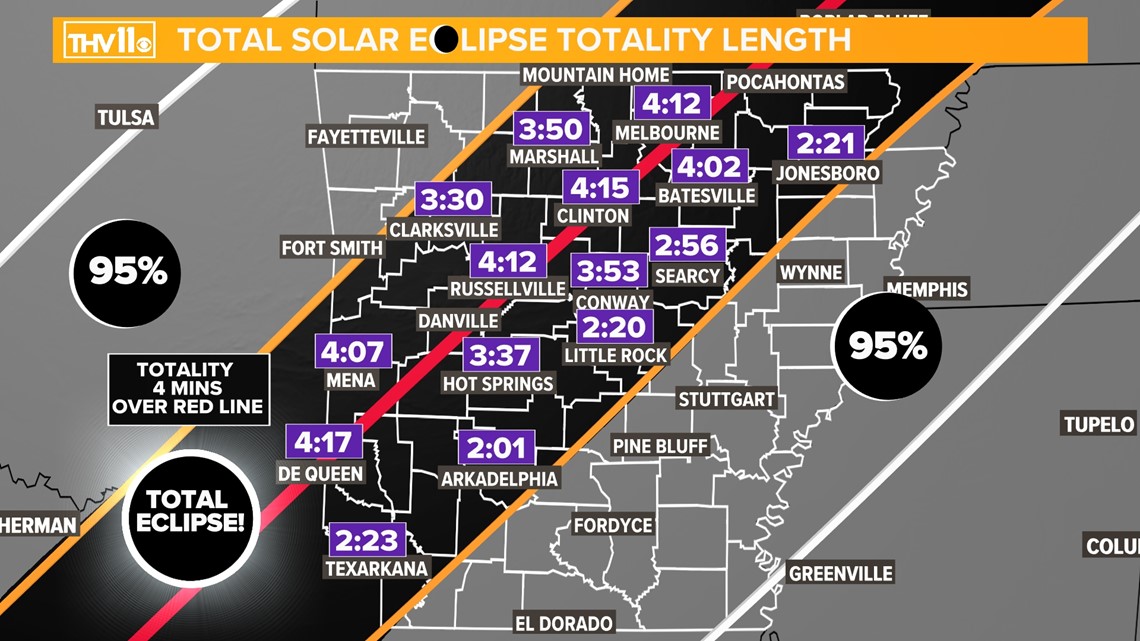
The longest period of totality is expected along the red line. Cities such as De Queen, Mena, Danville, Russellville, Clinton, and Melbourne will enjoy over four minutes of much darker skies in the middle of the afternoon.
Viewing the eclipse
When viewing most of the eclipse you need to make sure you never look at the sun directly without wearing eye protection.
A great option is wearing eclipse glasses from a trusted and verified manufacturer. One key thing to look for on the glasses is the approval stamp of ISO 12312-2. This label means your eyes are protected from the dangerous rays of the sun when viewing.
If you're looking for places in Arkansas where you can purchase eclipse glasses, please click here.
Some trusted glasses are made by American Paper Optics and Rainbow Symphony. The American Astronomical Society also has several approved products on its website.
Other ways to see the eclipse would be by making a pinhole projector or even using a colander. As the light goes through the tiny holes, it will project the eclipse on the ground.

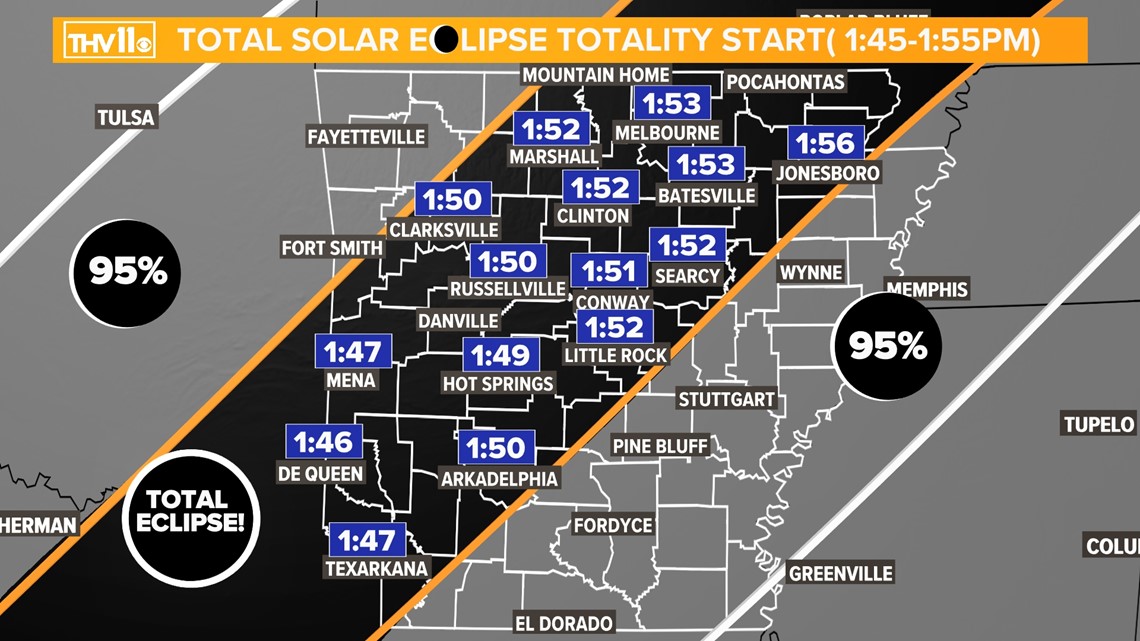
Watching the eclipse
When the event first begins looking through your eclipse glasses you will notice a part of the orange-looking sun is being overtaken by the blocking moon. As the eclipse continues, strange things will start to take place with the approach of totality.
About 50 minutes before totality as the solar energy begins to decrease, the air temperature may begin to drop a couple of degrees.
Then about 10 to 20 minutes before totality the sky will become darker and the colors will start to go more gray. Look at the ground underneath a tree and you may see projections of the eclipse as the leaves act like pinhole projectors.
The animals may start to act like they are getting ready to prepare for the night and flowers will begin to close.
Within five minutes before totality there could be an eerie and unsettling look toward the southwestern horizon as a darkening sky looms in the distance with the arrival of the moon’s shadow.
Waves of light known as shadow bands may be spotted on the walls and the ground about a minute before totality.
Be sure to look for the most amazing effects of the total solar eclipse a few seconds before the moon blocks out the sun’s disc entirely. As the final rays of light go through the valleys of the moon’s surface, beads of light could appear. This is known as Baily’s beads.
Finally, the Diamond Ring Effect could leave you speechless right before totality. You should keep your glasses on during these events.
When the sun is 100% covered it is safe and encouraged to take your eclipse glasses off and enjoy the amazing ability to see the sun’s outermost white glowing layer known as the corona.
During this short time of totality, you can look around and see the sky light up like it’s twilight in all directions.
You may not hear birds but will hear crickets and frogs instead as they are fooled into thinking night approaches. Flowers may close up. Be sure to put your phone down and take in this unique experience.
After the eclipse
Totality only lasts from two to four minutes. So be prepared to put your glasses back on as soon as the sunlight begins to show once again.
The Diamond Ring Effect and Baily’s beads can be seen for a few seconds after totality.
Over the next hour or so the moon’s shadow will retreat to the NE and skies will brighten up. Nature will then return to its normal activities.
Be sure to plan accordingly once the total solar eclipse ends. Many viewers will leave well before the entire eclipse is over. Expect traffic congestion and slow travel for several hours in some areas.
Other factors to keep in mind will be to stay hydrated, have plenty of snacks, and wear sunblock and other sun protection. If you plan to watch the event for several hours you can easily get sunburned in April.
Let’s hope no April showers are in the forecast because any cloud cover could greatly ruin the show for millions.
Below is a chart of cloud climatology for April 8 using the data from North Carolina State University and NOAA. This graphic shows what the sky conditions were for every April 8 of the past 30 years or so.

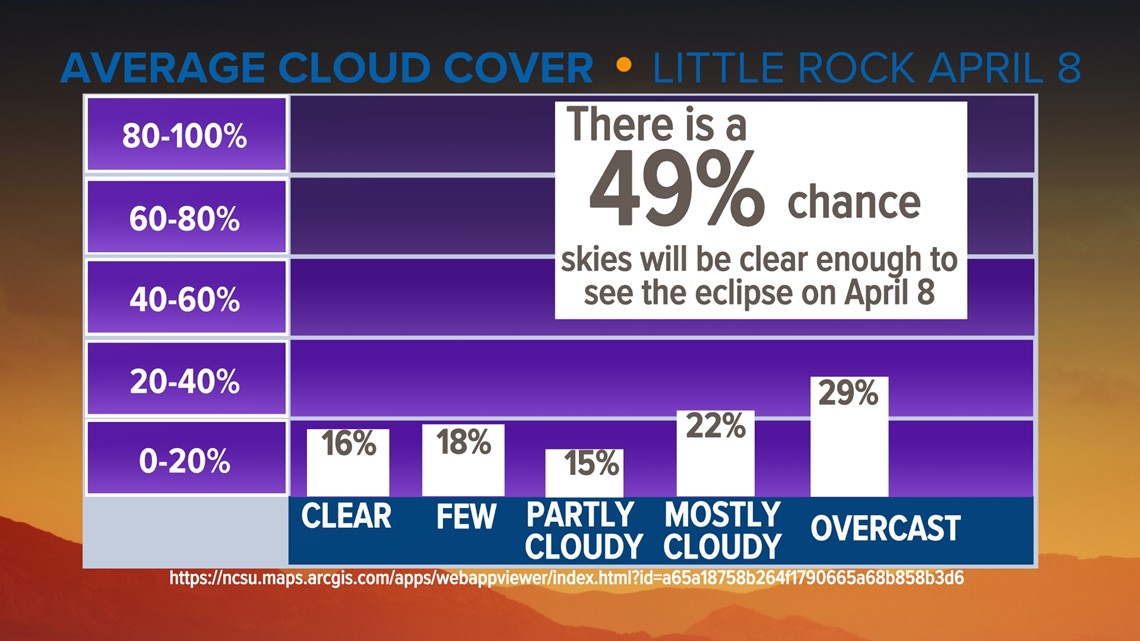
Clouds could likely happen during April in Arkansas, and the agreement is using climatology as a forecast shows that there is a nearly 50% chance the eclipse will be viewable.



